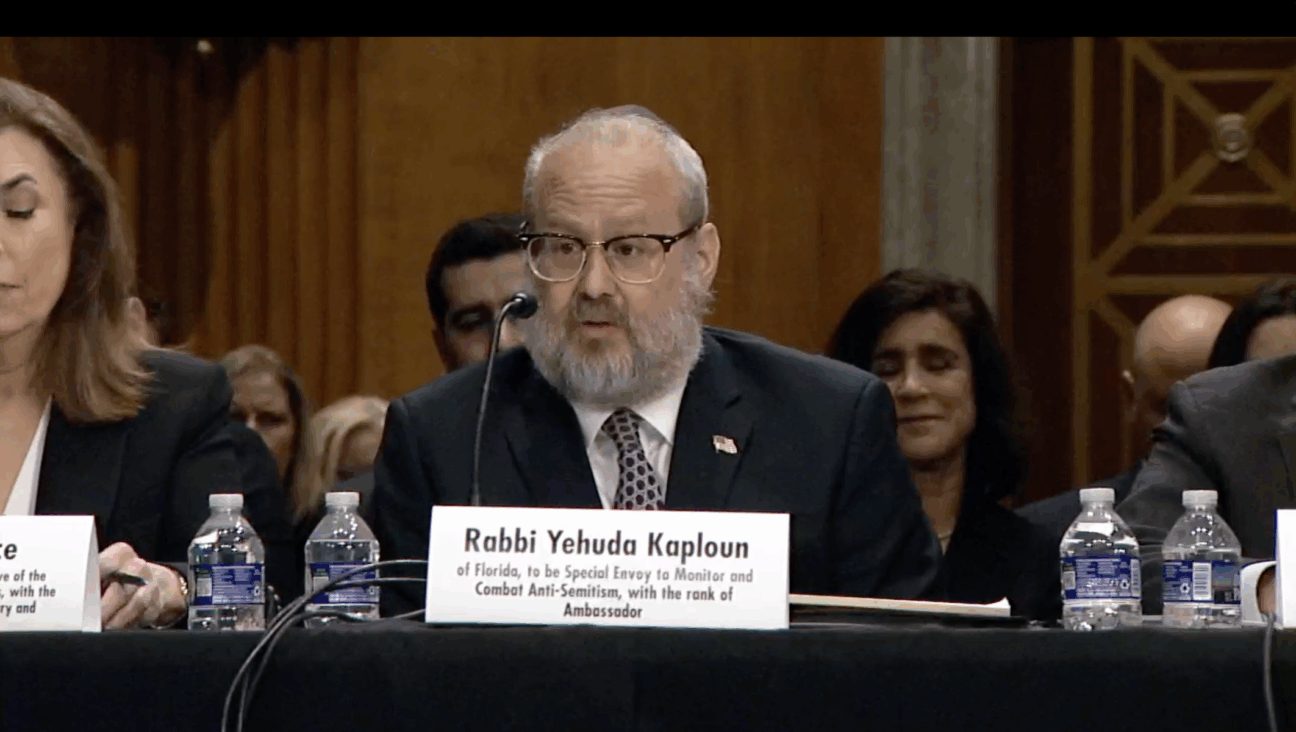Banksy Goes to Gaza

Graphic by Angelie Zaslavsky
Banksy’s street art in Gaza.
The elusive English street artist Banksy has produced four new works in the Gaza Strip, taking wry aim at the human toll of last summer’s conflict.
Six months to the day after the end of the Gaza war, which killed more than 2,100 Palestinians — including hundreds of children — and 72 Israelis, Banksy published photographs of the four pieces on his web site. The images were confirmed as real Bansky productions by his publicist, Jo Brooks, according to press reports.
Gaza’s rubble is the canvas for Banksy’s new paintings, done in his iconic stenciled style.
One image on the side of a wall shows an Israeli military watchtower transformed into an amusement park swing ride for children. Another, entitled “Bomb Damage,” on a piece of freestanding debris, shows a woman weeping. A third, on the wall of what appears to be a destroyed house, is a giant cat with a pink bow. The fourth is a message in English, directed at the world outside Gaza: “If we wash our hands of the conflict between the powerful and the powerless we side with the powerful — we don’t remain neutral.”
The installation was reported by Street Art News, among other publications. This isn’t Banksy’s first trip to Palestinian Territories. In the 2000s he painted several images on Israel’s separation barrier.
In addition to the photographs, Banksy released a short video about Gaza (which also includes shots of the West Bank) that is a mock travel advertisement for the devastated territory. “Welcome to Gaza,” read the video subtitles. “The locals like it so much they never leave (Because they’re not allowed to).”
In the video, an older man watches children play in front of Banksy’s cat painting. “This cat found something to play with,” he says. “What about our children?”
















